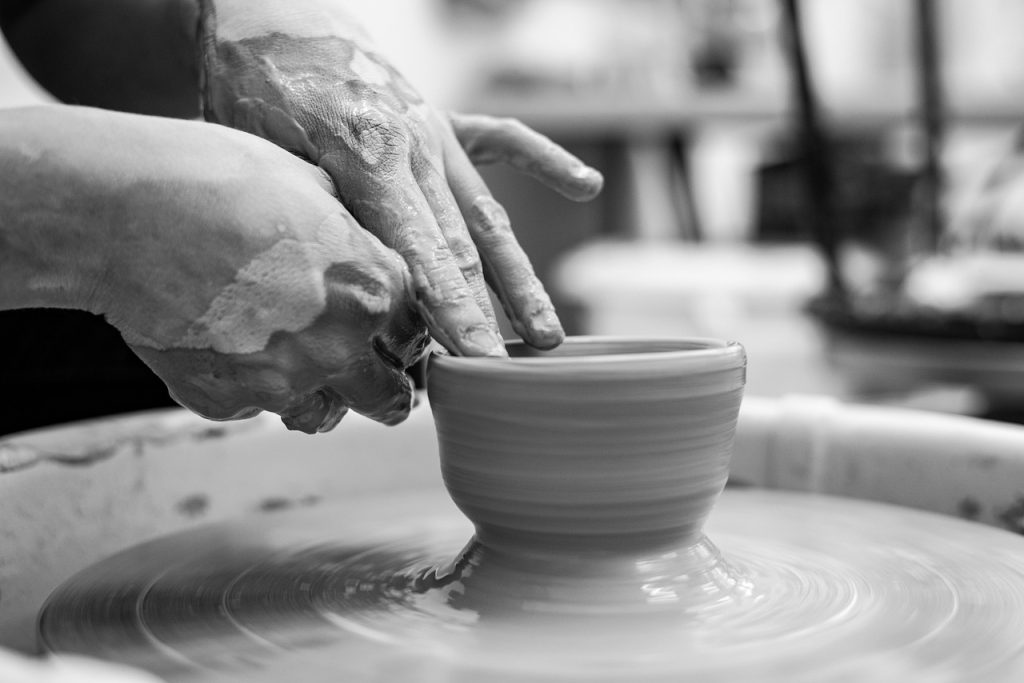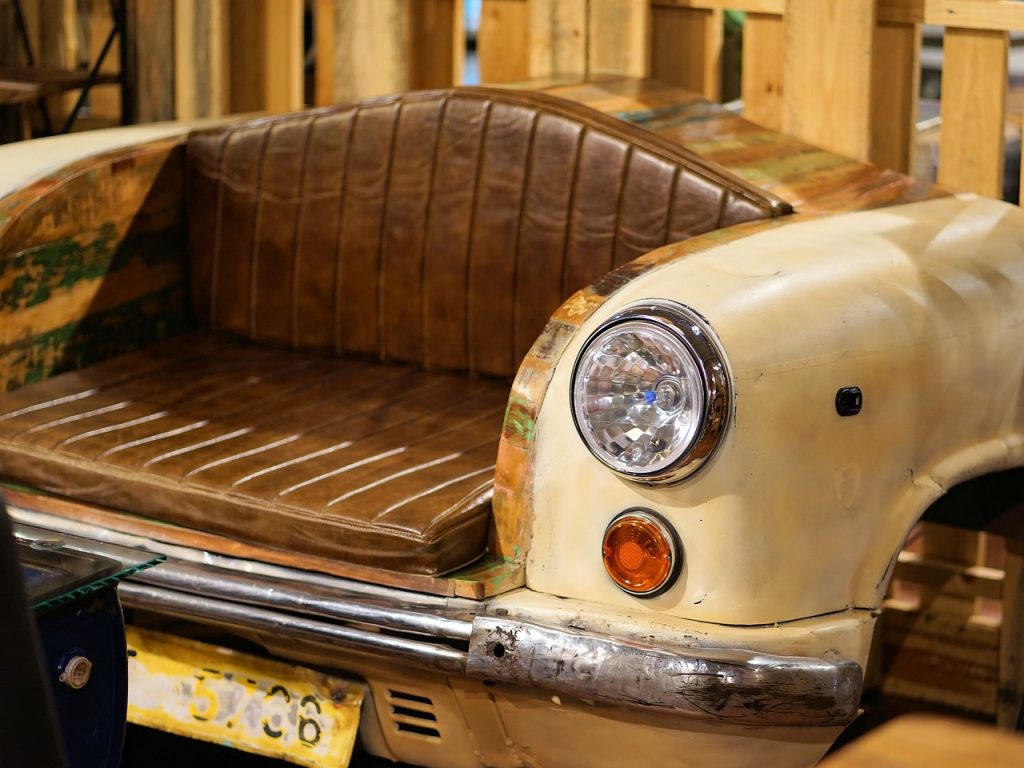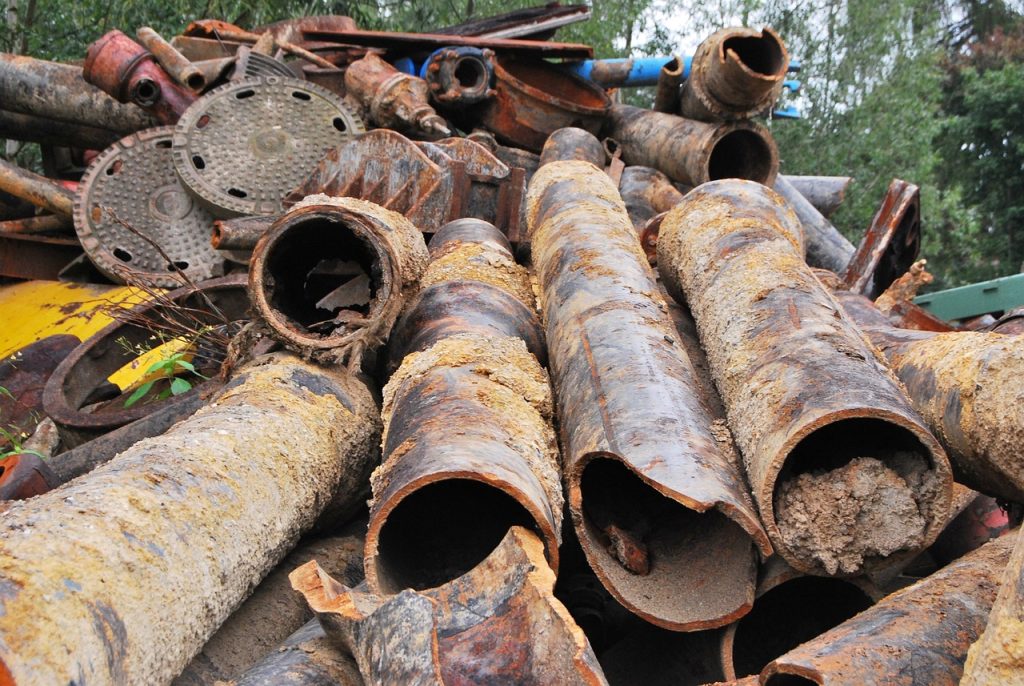- Collect clay scraps in a clean bucket.
- Add water sparingly to the clay scraps and mix.
- Allow the clay to absorb the water and soften.
- Sieve the clay to remove impurities.
- Spread the wet clay on a plaster surface for drying.
- Monitor the drying process until clay is pliable.
- Store the recycled clay in a cool, humid place.
Understanding the Basics of Recycling Clay
Let’s start by getting down to the basics, understanding how to recycle clay. Today’s guide will outline some straightforward steps, tutorials, and pointers for those you’re seeking to reclaim and recycle clay, whether you’re a budding artist in your home studio or running a large-scale pottery studio.
Why recycle clay, you might ask? Well, the answer is simple and multifold. First off, recycling clay can reduce waste. Most artists end up with tons of clay scraps, leftovers that are typically tossed in the bin. By recycling clay, you can utilize these pieces to their fullest potential instead of letting them go to waste. Secondly, it’s a cost-effective move. Fresh clay can be expensive, particularly for small studios or independent artists. Recycling can help save on these costs.
So, how do you go about recycling clay? The process essentially involves reclaiming the clay using specific steps. Let’s break these down. The first thing you’ll need is a bucket. Any standard-sized bucket should work fine, as long as it’s clean. Once you have your bucket ready, you can start collecting your clay scraps. These can be anything from dried pieces, trimmings from the wheel, or chunks that you’ve accidentally squished or dropped. Put all of these in your bucket.
The next step involves adding water to your bucket of clay pieces. Be cautious here; you don’t want to add an excess of water. Too much water can turn your clay into a soupy mess, which is challenging to work with. Add a bit of water at a time, mixing it in thoroughly. Leave the clay to absorb the water and soften.
Once your clay has softened, the next step in the recycling process is to sieve it. This process helps to separate the clay particles from the chunks or impurities. You can use a regular kitchen sieve for this task. Simply pour your clay mixture through the sieve and into a second bucket. The sieving process will catch any large or unwanted materials, while the smooth, wet clay will pass through into your second bucket.
At this point, your recycled clay will be quite wet. It’s essential to let it dry out before using it on your wheel or forming it by hand. Drying should take place in a controlled environment, preferably indoors and away from direct sunlight or other heat sources. Spread your wet clay out on a plaster surface; it aids in absorbing the excess water, making drying faster.
Keep checking on your clay frequently during the drying process. Once it reaches a point where it’s no longer soaking wet but still very pliable, it’s ready for use. You can test by simply poking a finger into the clay. If it indents with little resistance and doesn’t stick to your finger, then the recycling process was successful, you’ve got yourself some recycled clay.
Remember, recycling clay isn’t a process that you can rush. It takes time for the water to be absorbed, for the clay to dry to the right consistency, and for it to be sieved properly. The overall process will become easier and more streamlined over time, as you become used to the steps and nuances.
That’s the basic understanding of how to recycle clay, an environmentally friendly, cost-saving, and efficient way to manage resources in your studio. Whether you’re a studio owner or a solo artist, the practice of recycling clay is an invaluable skill that will ensure you never run out of material, even if you’re on a tight budget.
Exploring the Best Glaze Recipes for Recycled Clay
Once you’ve mastered the basics of recycling clay, it’s essential to experiment with different glaze recipes that complement your recycled clay. This particular aspect is something thriving potters and pottery enthusiasts alike should explore. Crafting the perfect glaze for your recycled clay pieces not only enhances their aesthetic appeal but it also adds a unique signature to your creations.
Now, there are countless glaze recipes tailored for various types of clays and designs. To find the perfect one for your recycled clay, you’d need to consider not only the color but also the texture, finishing, and even temperature requirements. You’ll be amused to know that pottery glaze can substantially morph in varying firing temperatures.
Most potters recommend starting with a simple white or clear glaze. These are universal in a sense and give a lovely sheen to your recycled clay pottery. Adding oxides or ceramic stains to this base glaze can create an array of different colours, giving you a whole palette to play with.
Alternatively, you might prefer an earthier glaze for recycled clay pottery. These recipes often require ingredients like barium, feldspar, and talc, creating a textured, matte finish. Pairing such a glaze with recycled clay pottery often results in aesthetically pleasing pieces that boast a rustic appeal.
For a vibrant, glossy finish, try a cone 6 glaze recipe. This type of glaze recipe gives your recycled clay pottery a bright shine, almost as if they’re wearing a coat of glass. A tip for potters considering glossy glazes: vary your application throughout the piece for a more exciting end result.
Now, if you’re aiming for a more authentic, ancient look for your pottery pieces, an ash glaze recipe would make an excellent choice for recycled clay. It adds depth and a distinctive rustic charm to the pottery, reminiscent of ancient pottery styles. Potters love this glaze for making pieces look weathered and antique.
There’s also the crystalline glaze, which is famous amongst potters for bringing an element of surprise at every turn of the potter’s wheel. This is because the crystals formed in this particular glaze never quite form the same pattern – making it an interesting and adventurous glaze for potters to experiment with on recycled clay.
Creating the perfect glaze requires patience and a willingness to experiment. You may find that a combination of different recipes and firing techniques yields the best results for your recycled clay pieces. And while shared glaze recipes can serve as a great base, don’t hesitate to tweak them to match your pottery style.
By incorporating these glaze recipes into your pottery ventures, you’re stepping into a magical world of hues, textures, and finishes. In turn, your recycled clay pieces will not only tell a tale of sustainable creation but also one of artful color exploration.
In conclusion, the glaze you select should match your pottery style, the clay you’re using, and ultimately, your artistic vision. Experiment with these glaze recipes, create your own, and see what magic you can cast with those brilliant brushes of yours. Happy potting and here’s to all the potters who’re making every piece of recycled clay pottery a kaleidoscopic canvas!
Practical Steps to Recycle and Rehydrate Clay
Ever wondered how to recycle clay, why it’s essential, or seemingly simple yet highly technical methods to recycle clay? You’re indeed in for a treat! Clay recycling isn’t as complex as it first appears. In terms of sustainability and cost-effectiveness, it’s a practice worth learning and implementing for any ceramic artist. Making recycled clay and practicing clay recycling can transform the way you work and help contribute to a better environment.
A first step in understanding how to recycle clay is getting to grips with the core components of the material. When it comes to clay, water is the vital restoring component. To recycle clay, you need to first break it down using water, a process called slaking. What’s the method? Here’s how: start by making a basin shape with your dry clay pieces. Add water to the clay until it’s just covered. Let it sit until the clay has slaked down. By now, it will look like a thick soup.
Then, recycle, recycle, recycle – your mantra during this process. Begin by removing any impurities like glaze drips or plaster from the clay. Any foreign materials could affect the workability and final product. So, place effort and caution into these preliminary stages of the recycling process – the results are worth it.
Now, prepare for an exciting part, making clay anew. What we’re trying to make by recycling clay is basically fresh, workable clay – similar to what one would buy at an arts store. To do so, when the clay and water mixture is completely slaked, pour it onto a plaster bat. That’s a special type of tray used to recycle clay by absorbing water. You’ll see clay and water interacting systematically here.
Your recycled clay will slowly begin to take shape, and as the water continues to be absorbed by the plaster bat, the mixture will thicken. After a day or so, you’ll have a perfect slab of clay – ready to handle all your artistic endeavors. It’s critical to remember, though, that the clay should not dry out. Keep it under plastic or in a lidded container, in a humid and cool place. Don’t rush the process – make sure the recycled clay is ready for use.
Which leads me to the final part of the process – rehydrating the clay. Clay can dry out, and when it does, it’s not fun or practical to work with. That’s why it’s crucial to rehydrate clay during the recycle process. Again, water is the key. Add water gradually and knead it through the clay until it’s at the desired consistency.
This may seem daunting initially, but there are truly ample benefits inherent in recycling clay. It’s a method that not only saves money but also makes a significant impact on our Earth. Less extraction of natural resources from our environment. Fewer carbon emissions from the transportation and manufacturing of new clay.
Without a doubt, recycling clay is the way forward. Whether you’re a seasoned ceramics artist or a beginner, this method will transform your artistic practice and positively impact the world. So, here’s to recycling clay, making the most incredible creations, and embracing sustainability in the ceramics world and beyond. Embrace the method, make it your own, and create exciting works with recycled clay.
The Importance of Water and a Ceramic Bucket in the Clay Recycling Process
The fascinating world of clay recycling goes deeper than just rehydrating and reworking old pieces. The importance of the elements involved, particularly water and ceramic buckets, can’t be overstated. This guide will shed light on the role of these essential components in the clay recycling process.
Clay, whether you’re working with it for the first time or recycling, needs water. Water is the driving force that transforms solid, rock-hard clay into a malleable material ready for sculpting. Lacking sufficient water, the clay wouldn’t have the pliability needed for creation. However, when it comes to recycling clay, water serves a slightly different yet equally critical function: rehydration. Dry clay can be tough and crumbly, making it a challenge to work with. But when rehydrated, it regains its flexible structure, becoming sensitive to the touch and easier to shape.
Recycled clay goes through several stages during the rehydration process. First, you need to slake down the clay, which entails soaking it in water. After slaking, it’s then wedged – a process of kneading the clay to remove air bubbles and achieve a consistent texture. Water plays an integral role in both of these stages, from softening the clay in the slaking process to helping achieve the necessary workable consistency during wedging.
The ceramic bucket – or as some might more specifically term it, the wheel bucket – is another critical element in recycling clay. The wheel bucket primarily supports the wedging process, providing a contained area where the clay can be worked and manipulated. Furthermore, the ceramic bucket also serves as a short-term storage space for the clay, an aspect that’s particularly important in maintaining the right moisture balance within the clay.
When water meets clay in a ceramic wheel bucket, magic happens, whether it’s with fresh clay or recycled clay. The vessel’s ceramic material is non-absorbent, which means it won’t soak up your water, keeping it available for the clay to absorb and soften. This non-absorbent property is why a ceramic bucket is preferable over other materials such as plastic or metallic buckets. Also, the ceramic material remains cool, which helps to slow down the drying process, meaning your recycled clay stays workable for longer.
The process of recycling clay with a ceramic bucket and water isn’t just eco-friendly; it’s also economically smart. Reusing clay scraps can save artists a significant amount of money over time. Plus, it encourages resourcefulness and reduces waste, aligning the art practice with sustainable practices.
Understanding how to manipulate water and the ceramic bucket is a pivotal part of the clay recycling process. These elements hold the power to convert useless clay scraps into reusable material. If used properly, a ceramic bucket and plenty of water can breathe new life into dried-out clay, kickstarting the creative process once again.
Now that you’ve got the lowdown on the importance of water and ceramic buckets in recycling clay, you’re ready to explore the next steps in your journey. Whether you’re developing your own glaze recipes for recycled clay or simply want to continue learning about this amazing process, remember, it all starts with a ceramic bucket, recycled clay, and, of course, plenty of water.
How to Dry and Store Recycled Ceramic Clay for Future Use
The process of drying and storing recycled ceramic clay for future use requires a good understanding of the properties and behavior of clay. Here, we’ll delve into various tactics and best practices to ensure that you can dry clay effectively and store it for future ceramics making.
It’s important to remember that properly drying clay is a crucial step in the recycling process. When it comes to drying, timing is key. While you can definitely leave clay out to dry naturally, it’s often more efficient to use a kiln firing process for quicker results. Drying clay in a kiln allows the water to evaporate from the clay faster than air drying would, allowing it to reach its ideal dryness faster..
Before beginning the drying process, consider the type of clay you are working with. Different types of clay may require different drying times — a terracotta clay, for example, might dry quicker than porcelain clay. You’ll need to keep a close eye on your clay during the drying process to prevent it from drying too quickly, which can cause cracks.
Preparation is key when it comes to drying and storing clay. If you’re going to store your dry clay for a longer period, consider sealing it in an airtight bag to prevent it from absorbing moisture from the surrounding environment. For those planning on using their clay sooner rather than later, wrapping it in a moist cloth before storing it in a cool, dry place can keep it at the perfect consistency for future use.
Another key aspect of the drying and storage process is the firing phase. Kiln firing can add solidity to your clay, making it easier to store and less prone to damage. Depending on the type of ceramics you’re making, you might opt for a bisque firing, which leaves the clay porous and more malleable for glazing. However, ensure that you don’t rush the kiln firing process as this could produce clay that is too brittle and prone to breakage.
In recycling and rehydrating clay, it’s pivotal to remember the importance of water in the process. By placing your recycled clay in a ceramic bucket filled with water, the clay can absorb the necessary amount without becoming oversaturated. This is especially helpful for clay that has become too dry and needs rehydrating. Always remember that clay’s moisture content is crucial to its workability, so learning to control it is part of learning to create good ceramics.
Drying and storing ceramic clay undoubtedly takes time and patience, but with a thorough understanding of the process, it’s absolutely achievable. Remember, the key is to take it slow, monitor the clay’s condition, and, when in doubt, turn to tried and true tactics that ceramics makers have relied upon for generations. By developing a system that works for you, you can ensure that you’ll always have quality, prepared clay ready at your disposal — whether that involves drying clay in the sun, using kiln firing, storing it in a moisture-controlled environment, or a combination of all the above. Always remember the ultimate goal: creating the best possible ceramics.
Taking the time to learn about, and understand, each step in the process of drying and storing recycled clay means that when you’re ready to start making ceramics, whether it be a small cup or a large sculpture, you’re already several steps ahead in the game.




